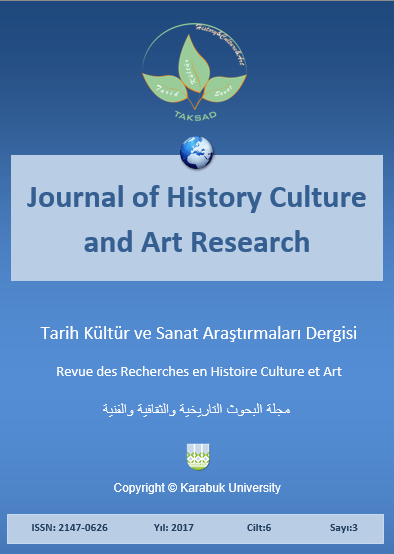A Study on the Creation of Architectural Spaces for Children Using Rumi’s Storytelling Method
DOI:
https://doi.org/10.7596/taksad.v6i3.979Anahtar Kelimeler:
Children- Creativity- Art- Storytelling- Mawlana.Özet
Public areas of behavioral science knowledge on issues related to children's environmental architecture interested in building their studies, based on the theories of learning and development of children. Children have a particular position in spaces, where grownups live, therefore the quality of spaces, proportions, architectural details, materials and so on, should act in a way that create curiosity, understanding of space and communication, selection and finally, the desire to learn and develop creativity in children. The aim of this project is to create conditions and facilities regarding growing, nurturing, creativity, promotion of knowledge and ability of children. The research methodology in this paper consists of two parts: the field and library studies. Research goals include the creation of conditions and possibilities that are the development of creativity and promotion of children's knowledge and ability. Logical and comparative reasoning method has been used for the conclusion based on case studies. Using dynamic architecture can help to develop creativity in children and the dynamics of architectural space can add deepen the joy of playing and storytelling. As a result, the research tries to link psychology and its appearance in the architectural space. The study suggest that storytelling can be facilitated through architectural space and with the help of it, we can increase the architectural designing of educational and artistic spaces.
Referanslar
Abdol Hakim, Khalife (1996). Mystic of Rumi, translated by Ahmad Mohammadi, Ahmad Miralayi. Tehran: Scientific and Cultural Publishing Company.
Dashti, Ali (1983). A review in Shams, (7th ed.). Tehran: Forever Publications.
Falamaki, Mohammad Reza (2011). Art and architecture magazine, 87.
Homayi, Jalal al-Din Muhammad (1991). The General Court of Shams Tabrizi, (9th ed.). Tehran: Safi Ali Shah publication.
Madadpur, Mohammad (1995). Manifestations, spiritual wisdom in Islamic art. Tehran: Amir Kabir.
Madadpur, Mohammad (2001). Topics in Philosophy of Islamic Art. Qom: The Institute of Islamic Thought and Culture.
Mavlana, Mohammad Balkhi (2008). General Masnavi, Correction Mohammad Estelami, (9th ed.). Tehran.
Riazi, Heshmatolah (2002). The mysticism path to the 5th century AD. Tehran: Truth.
Safa, Zabihullah (1999). History of peace literature, (9th ed.). Tehran: Paradise Publications.
Sajadi, Seyed Jafar (1994). Glossary and mystical interpretations, (2nd ed.). Tehran: Tahoori.
Shafi'i Kadkani, Reza (1992). The poet of mirrors. Tehran.
Shafi'i Kadkani, Reza (2000). Music and poetry, (6th ed.). Tehran: Aware.
Shamisa, Sirus (1992). Excerpts lyrics of Rumi, (9th ed.). Tehran: Dadar research and publishing.
Zarrinkoub, Abdol Hossein (1994). A convoy of Hilla, (6th ed.). Tehran: Scientific publications.
Zarrinkoub, Abdul Hossein (1985). Sernei. Tehran: Scientific publications.
İndir
Nasıl Atıf Yapılır
Sayı
Bölüm
Lisans
Tarih Kültür ve Sanat Araştırmaları Dergisi'nde yayımlanan tüm çalışmalar Creative Commons 4.0 CC-BY lisansı ile lisanslanmıştır.
Bunları yapmakta özgürsünüz:
- Bu eseri her boyut ve formatta paylaşabilir — kopyalayabilir ve çoğaltabilirsiniz.
- Materyalden Adapte et — karıştır, aktar ve eserin üzerine inşa et
- her türlü amaç için, ticari amaç da dahil
Alttaki şartlar altında:
Atıf — uygun bilgiyi, lisansa linki, and ve değişiklik yapıldıysa değişiklik bilgisinivermelisiniz. Sizi veya kullanımınızı lisansörün onayladığı bilgisini içermemek kaydıyla, size uygun şekilde bu işlemleri gerçekleştirebilirsiniz.
AynıLisanslaPaylaş — Eğer materyali karıştırdınızsa, aktardınızsa ya da materyalin üzerine çalıştınızsa, ancak aynı lisans ile dağıtabilirsiniz.
- Ek sınırlamalar yoktur — Lisansın izin verdiği hakları başkaları üzerinde kanunlarla ya da teknolojiyikullanarak sınırlayamazsınız.







